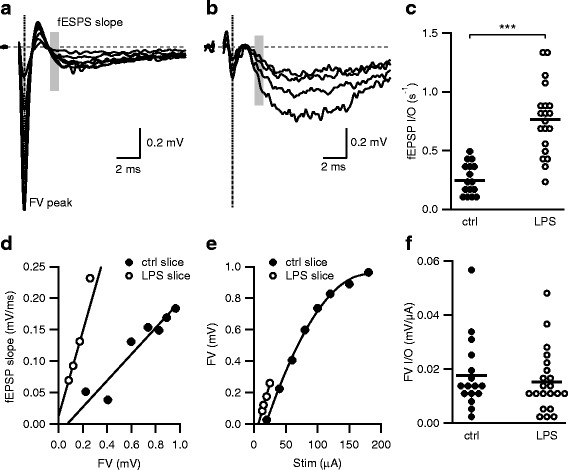Fig. 2.

Exposure to LPS in utero causes a long-term increase in synaptic strength. a, b Representative fEPSPs evoked by increasing stimulation intensities from hippocampal slices obtained from adult control mice (a) and mice exposed to LPS in utero (b). Each trace is the average of five consecutively recorded voltage traces. Gray bars highlight the regions where fEPSP initial slopes were measured. Dashed line illustrates the point where the FV peak was measured. The stimulus artifact preceding the FV was blanked out. d fEPSP slope versus FV relation from a single representative experiment. fEPSP initial slope versus FV relations were fit with linear functions without constraints. The slope derived from the fits (s−1) reflects the input–output relation of synaptic transmission (fEPSP I/O). c Scatterplot of fEPSP I/O determined in d from individual experiments for control- and LPS-exposed mice. Asterisks indicate p < 0.001. e FV versus stimulus strength (Stim) relationship for a single representative experiment representing the FV input–output relationship (FV I/O). The FV I/O was fit with a quadratic function to calculate the slope of the FV I/O at threshold (FV I/O slope). f Scatterplot of FV I/O slope determined in e for individual experiments demonstrate that CA3 intrinsic excitability and axonal density were not significantly different
